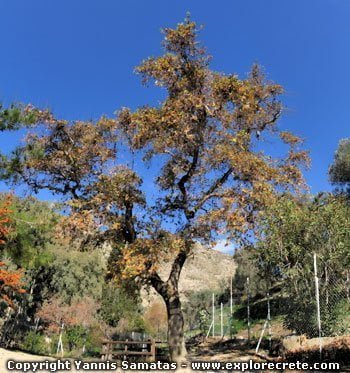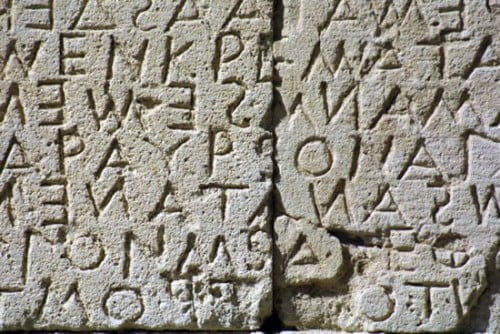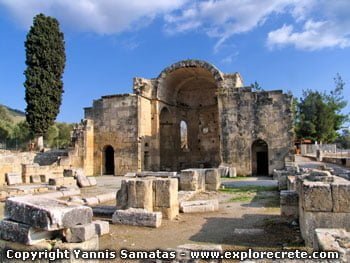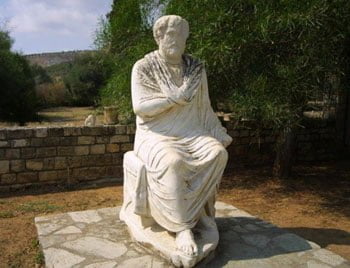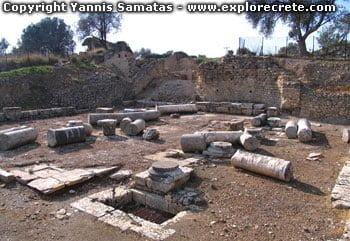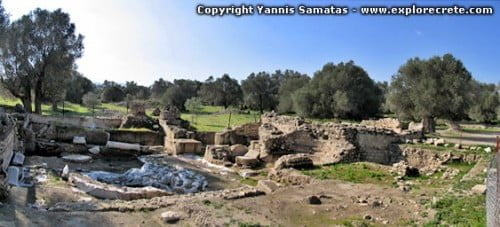Minoan Palaces in Crete
The Minoan Palaces known to date in Crete are those of Knossos (22,000 m2), Phaistos (18,000 m2), Malia (7,500 m2) and Zakros (8,500 m2 ). All the Minoan palaces excavated so far are in east Crete. In west Crete the existence of the Minoan palace of Kidonia in Chania is known, but it has not been excavated because it is located in the town centre (Kastelli Hill), in a densely-populated area.
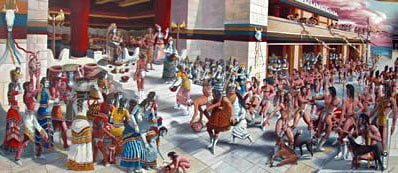
The Minoan palaces were autonomous and independent from each other, but they appear to have followed a common policy dictated by the central, larger and more sumptuous palace of Knossos.
The Minoan palaces played an active role in all the activities of Minoan society, adapting to multiple demands with various functions.
In addition to their use as the residence of the royal family and other elites, the priesthood (with the king himself as archpriest) and officials, the palaces did not close their doors to the citizens. They may have had special sacred areas (throne rooms) where the king and his officials deliberated on matters of policy or justice, but the palaces also contained the major sanctuaries to which all the people had access.
In the palaces were held most of the religious ceremonies, the various processions and the famous bull-leaping events, which were open to all. The palaces also housed the workshops where luxury goods such as decorated pottery, seals, figurines of precious stones, etc. were produced for export.
The production and distribution of farming goods, on the other hand, did not take place inside the palaces but at the rural farmhouses or Minoan villas scattered across the Cretan countryside. Obviously the inevitable mess accompanying animal husbandry was not acceptable within or near the palaces. It is also far more practical to make cheese on the spot where milk is produced. However, the production and distribution of goods at farmhouses and villas was controlled by the palaces. This means that the political, administrative and economic system of Minoan Crete was under the centralised control of the Minoan palaces.
Common Features of the Minoan Palaces in Crete
- The Minoan Palaces are oriented north to south and are unfortified. This means that they are not surrounded by high walls, although small fortifications have now been discovered in many parts of Crete.
- They are building complexes, meaning that they are comprised of many wings of small rooms. The wings extended in the four cardinal directions (north, south, east and west) around a rectangular central court, which functioned as a lung providing the surrounding rooms with air and light.
- Apart from the central court there were other paved courts, large enough to accommodate various events. Some even contained a theatral area – tiers of steps used as theatre seats.
- The west wing of the palaces was usually considered a sacred space. It is no coincidence that this is where the magazines or storerooms were located, demonstrating the importance of trade to the Minoan economy.
- The east wing generally contained the various workshops.
- The palaces are multi-storeyed with large staircases, lightwells and water and drainage systems.
- Several rooms contain frescoes providing us with information on Minoan life.
- The palace entrances were particularly elaborate. They often used polythyra, a system of doors set next to each other, with a lovely aesthetic result. These, combined with the many columns and imposing staircases, formed imposing propylaea leading into the palaces.
- Stone was widely used in the construction of the palaces. The stone walls were plastered and decorated with frescoes (wall paintings where the painting is painted directly onto the damp plaster, so that the colour sinks into it indelibly). Other materials used in the construction of the palaces included alabaster and wood.
- The rooms of the palace were heated on cold winter days by open wood-burning hearths on the floor. Only one closed fireplace has been found to date, in the throne room at Knossos.
- The palace windows were unglazed, as the Minoans lacked the necessary technology to make panes of glass. However, some windows of thin sheets of alabaster have been found. They are so fine as to be semi-transparent, allowing light in but preventing anyone from seeing clearly either in or out.
- Finally, it is worth mentioning an impressive feature of the Minoan palaces: their famous, four-thousand-year-old drainage systems. These are stone structures with running water used to flush the lavatories in various rooms. Stone ducts also formed drains which led rainwater from the courts outside the palaces, to eliminate the risk of flooding. Finally, clay ducts which fitted into each other distributed clean drinking water throughout the palace. The water was piped down from often remote springs, along extensive stone aqueducts.
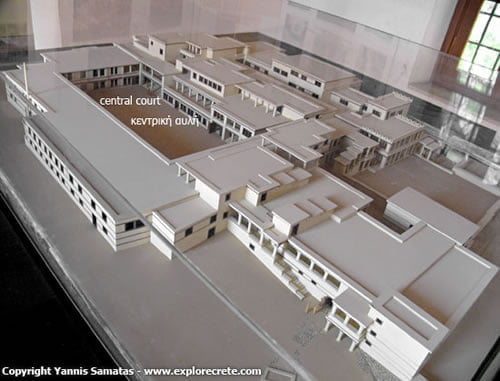
The wings of the Minoan palaces extended around a rectangular central court 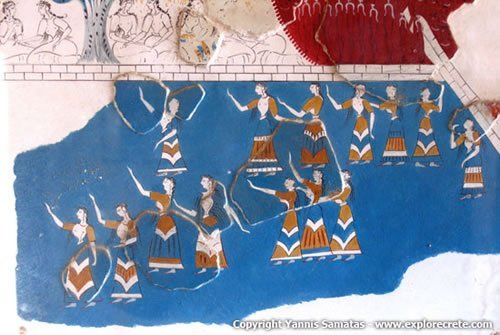
Minoan fresco from the palace of Knossos. Evans recomposed the image from the fragments of the original fresco 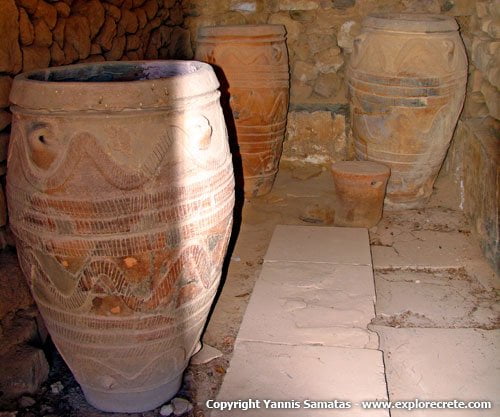
Various products were kept in big pithoi in the palaces’ storage rooms 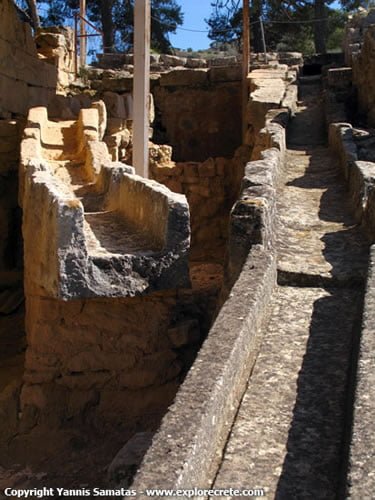
Drainage channels in the Minoan villa of Agia Triada. Drainage channels were stone-made, while clay pipes were used for distributing fresh water to the palace
© explorecrete.com All Rights Reserved. Reproduction or copying without permission is prohibited.

